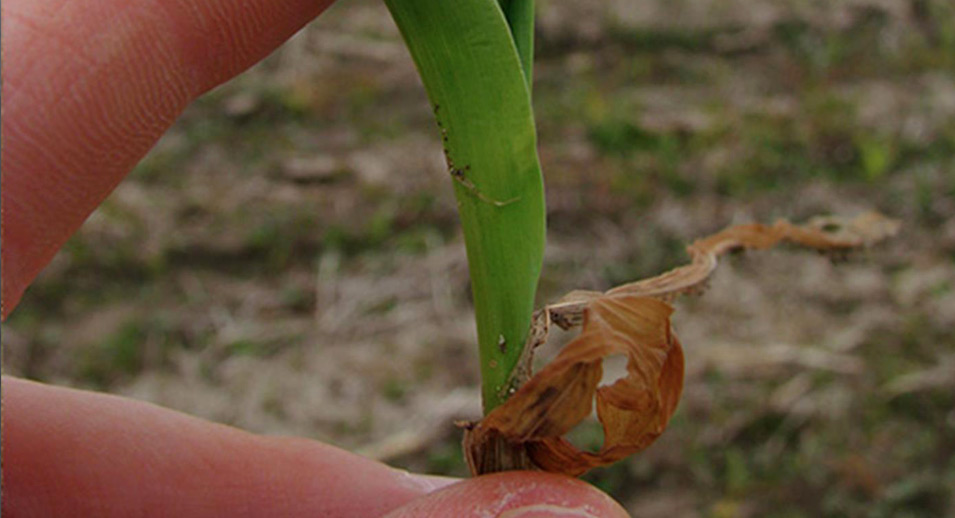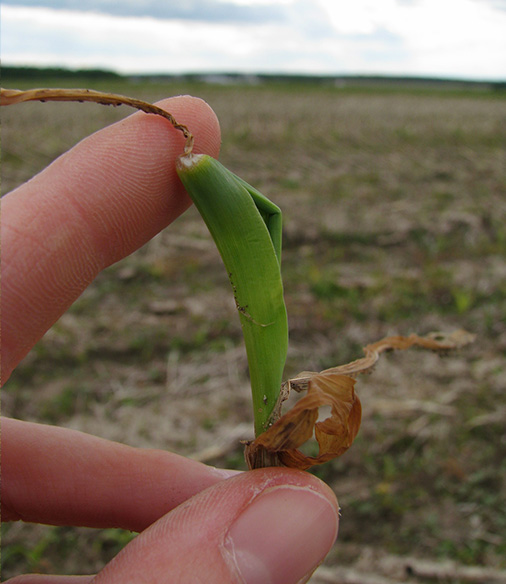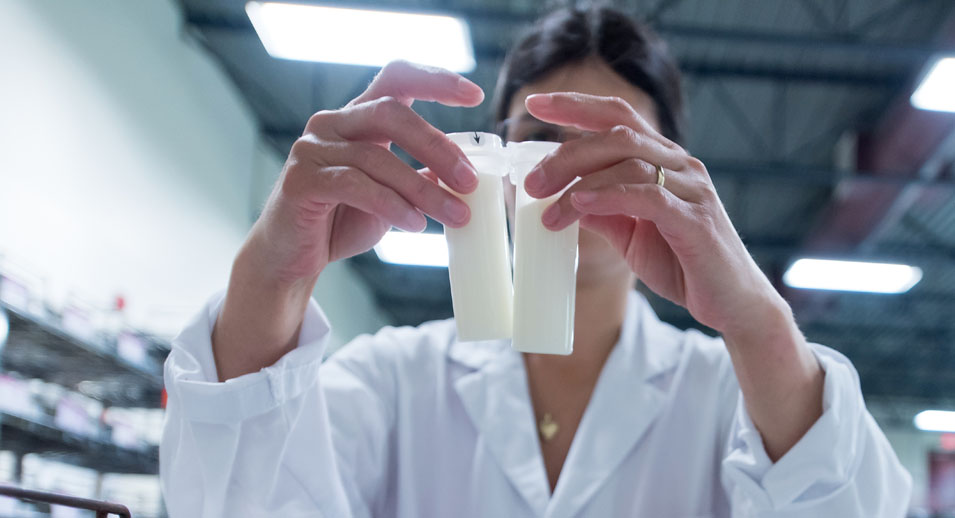Spring frost: how are my corn seedlings reacting?
- June 2, 2020
When temperatures fall below freezing point, lesions can form on plant tissue, sometimes causing irreversible damage.

Effects of frost on seedlings
The effect of frost on corn seedlings will depend on several factors, including the number of hours of exposure, the degree of maturity and the temperature levels of the frost. Up to the 5-leaf stage, the growing point of corn is below ground level, which generally protects it from frost. Although the aerial part of the plants may seem severely affected, this will not prevent them from growing, and the effect on yield will likely be negligible.
How to check on the seedlings’ condition after frost?
To verify the impact of the frost on your corn seedlings, you can walk your field about 3 to 4 days after the frost. If no growth is visible, dig up a few seedlings and examine the growing point by opening the stem to below ground level. If it is firm and creamy white, the plant is alive. If it is soft and greyish, the plant is dead. A deadly spring frost is quite rare in corn, but it could occur if the temperature drops to -2°C or lower for a few hours.
How can the risks be minimized?
It is necessary to know the average date of the last spring frost in your area when planning to sow corn. This date corresponds to the last day when the daily minimum temperature is 0°C or less. Corn yield will be optimal if it is sown between the end of April and mid-May, depending on the region. To evaluate the risks and choose an approximate sowing date, Quebec farmers can rely on the AgWeather Quebec website where they can consult different maps by region. To find out whether plants were exposed to frost the day before, they can also use this frost map report.
So, if spring frost occurred in your area, how are your plants doing?

Corn field 2 days after a
non-fatal frost.

Photo: B. Duval











